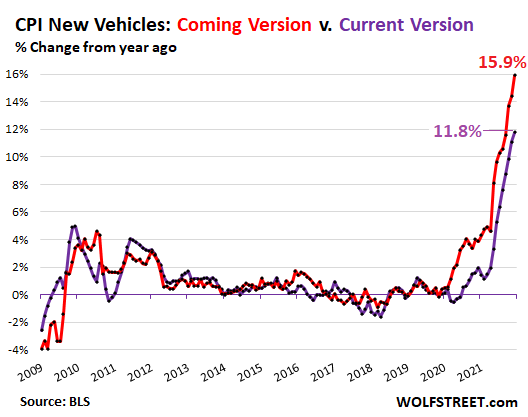From Wolf Street, January 18:
The BLS finally changed one of my pet peeves in the CPI. But the “hedonic quality adjustments” will continue until the mood improves.
The Bureau of Labor Statistics is finally going to change the component of the Consumer Price Index for New Vehicles that has vexed me since Adam and Eve. It’s going to change it in two big ways: The way it collects the data, and the way it figures the CPI for new vehicles. The BLS announced the final changes in March last year. The new version will be included in the CPI for April 2022, to be released in May. The data for the new version, going back to December 2007, is going to blow your doors off in a moment.
The BLS is going to switch to transaction-based prices for new vehicles. It purchases the data from J.D. Power. I have been producing charts with J.D. Power’s Average Transaction Prices for a while. The BLS will abandon the old survey-based method of asking dealers about the prices of hypothetical vehicle configuration. It will also make changes in the way it calculates the CPI for new vehicles.
The coming version of the CPI new vehicles spiked by 15.9% in December from a year earlier (red line), compared to the current version’s 11.8%, which had already been the biggest spike since 1975 (purple line).

If this new method – officially called “Research CPI-U-NV” – had been used last year, the overall CPI for December wouldn’t have been 7.04% (rounded to 7.0%), but something like 7.16% (rounded to 7.2%).
Whatever higher or lower CPI this new version might produce in the future, it picked up on the current price spikes much more than the classic survey-based method.
But from the index in its cumulative form, with both the classic CPI-NV and the R CPI-U-NV indexes set at 100 for December 2007, we can see that the new version doesn’t always produce higher CPI readings, and in fact produced lower readings some of the time....
....MUCH MORE